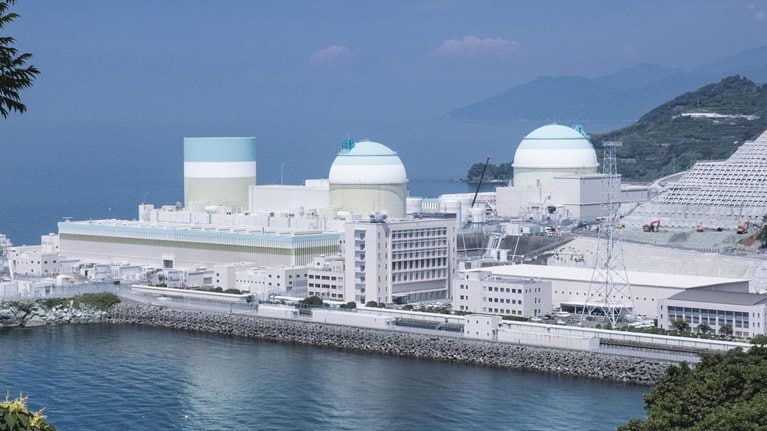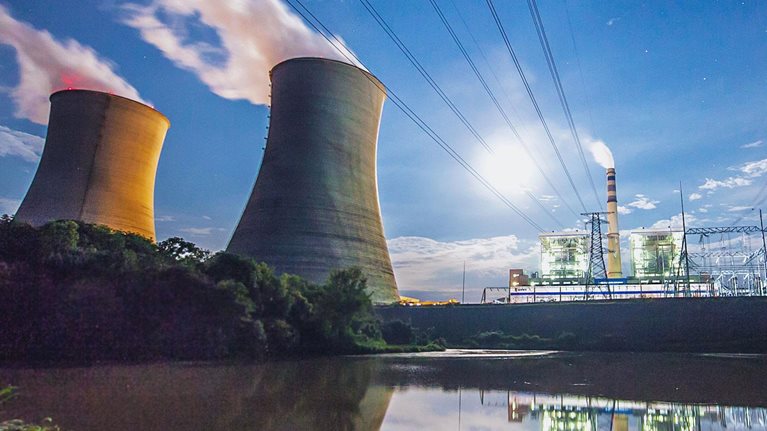Even before the outbreak of COVID-19, fossil-fuel power plants faced significant disruption from renewable energy sources, low gas prices, and ambitious decarbonization goals, all of which are changing customer preferences. Now, as the power-generation industry shifts to the next normal, adopting the latest digital and advanced-analytics technologies has become critical.
Many power companies began their digital transformations with technological solutions such as data models, which help optimize set points, enable better dispatch decisions, and support maintenance strategies and operating-mode selection. Forward-thinking companies, however, have recently started using visualization tools to manage real-time generation performance and digital control software to relay predictive data to control rooms. Yet these innovations are grounded in tangibly improving outcomes for plant operations and are therefore only part of a digitally enabled, next-generation power plant (Exhibit 1).

Chief among an organization’s most valuable assets are its data. And the first steps of any company’s journey are building a fact-based, data-driven culture and learning how recent advances in analytics can transform data into actionable insights. The next generation of digital and advanced-analytics tools has emerged alongside innovative technologies, such as artificial intelligence and machine learning. Such approaches seek to go beyond traditional multivariate regression analysis methods in terms of revealing hidden patterns and complex interdependencies.
For example, a next-generation power plant can use machine learning to account for significantly more inputs, thus enabling core plant operational functions to be modeled more precisely than previously thought possible. Just a few years ago, performance-improvement models based on thermodynamic models and OEM set points were considered an adequate approach to optimizing a plant’s heat rate—the amount of energy needed to produce a single kilowatt-hour (kWh). Today, machine learning can optimize heat rates with much greater efficiency in a fraction of the time.
In the coming decade, power plants must improve their unit efficiency and increase the resilience of their operations to remain competitive in the global energy supply. Here, we illustrate two points: first, that the latest advanced-analytics models and solutions have changed the art of the possible for power generation; second, that adopting digital solutions in power generation matters more today than ever before.
The foundation for digital tools has rapidly expanded
Historically, power plants have heavily relied on well-established legacy systems based on “first principles” engineering insights and problem-solving methods, such as direct monitoring of temperature or pressure deviations without predictive or pattern-recognition algorithms. These programs required expensive systems that tracked only a few types of data and relied on proprietary engineering knowledge to provide system warnings and operating bands.1
Two trends help show the path forward. First, operators have become more familiar with new technologies, techniques, and tools to collect and store data. This has led to the development of rudimentary dashboards to track plant-specific parameters, such as high superheater temperature alarms or excess pressure on a turbine.
Second, the availability of workers skilled in programming and digital technologies has increased, while data-processing costs have decreased. As a result, more companies now offer inexpensive data-analytics solutions. In fact, a review of 40 companies offering products immediately applicable in power plants shows that the development of operations-oriented technology and advanced mathematics models has grown drastically. Small software programs meant to optimize a specific operation or support a consistent decision point have proliferated, and higher levels of specification have created a technology ecosystem that allows power generators to embrace targeted, value-accretive digitization (Exhibit 2).

These trends have set the stage for the current digital transformation. Cheap processing power, available talent, and a large repository of historical data provide the foundation upon which new advanced-analytics techniques and end-to-end digital tools can be built.
Next-generation tools can be easily adopted—and add significant value
Power plants are already highly “sensorized,” meaning vast amounts of data are continuously collected and stored. However, our research shows that a mere 20 to 30 percent of the data collected is used to directly inform decision making and that the data collected from sensors could be better optimized (Exhibit 3).

As an example, one power plant collected and stored more than 30,000 different “tags,” or unique types of plant data, for more than ten years—yet these data went completely unnoticed by leadership. Such information is often difficult to digest, and links between the data set and its financial impact are not always obvious. As a result, many operators might perceive such data as a “black box,” unless they have been involved in the collection process along the way.
The next generation of value will likely be built upon this informational foundation. Operators can employ an analytics-backed approach to find unique data predictors of plant performance. And expanding on those findings with first-principles engineering and operating insights can optimize previously unidentified value drivers. For instance, rapid machine-learning algorithms can already identify optimal parameters to increase combined-cycle gas turbine plant outputs and heat rates. Advanced pattern-recognition methods can identify and predict the need for repairs and proactively recommend focused preventive maintenance.
Optimization models for unit efficiency, flexibility, and operability can further help operators run their facilities to the theoretical limits of performance. The results can include improving their bottom lines by increasing power availability and reducing fuel consumption to minimize carbon emissions.
Developing advanced analytics: A four-step approach
Even the most efficient power plants can benefit from advanced-analytics models to improve heat rates (Exhibit 4). An increasing number of power companies at the outset of their digital journeys are already seeing promising results. Irrespective of fuel type (coal or gas), machine learning and advanced analytics can create heat-rate improvement of up to 3 percent. Generating higher profits and lower carbon emissions can be accomplished by following a four-step program.

This approach—based on historical data from operators, IT teams, and small and medium-size enterprises (SMEs)—incorporates more than 1,000 data tags to build models that simulates multiple scenarios and generates counterintuitive recommendations. In addition, these tags includes hundreds of variables, such as temperatures and pressure at different points of different equipment, ambient temperatures, and on–off tags and their durations.
- Companies must obtain insights from historical data. Plant operators need to ensure the data are high quality and have been reviewed for inconsistencies, such as one-off equipment breakage or outages. This correlation analysis can help provide insights into basic relationships between data and past performance.
- Operators and owners should use the advanced-analytics model and ask, “What if?” Doing so can enable leadership to understand relationships and constraints based on the data and subsequently explore new scenarios (for example, how would a gas turbine perform if pressure limits were increased?) This kind of sensitivity analysis can also provide additional insight into past performance.
- Once the analytics-based steps are completed, operators can move to prediction. To begin, they must determine how well the predictive algorithm forecasts output, as the advanced-analytics model can use part of the actual data to provide a picture of future performance. The ex-ante prediction—a forecast that uses only available information—can be compared with actual data to determine ex-post accuracy.
- Follow up with optimization. Machine learning and advanced algorithms can prescribe optimal actions for real-time iteration. A system that employs machine learning can react to data it has previously logged, strengthening the relationship between what was predicted and what happened—as well as charting deviation between the two. This system can then improve on its iteration process and make subsequent predictions much more accurately. Predictions will continue to improve over time, yielding optimal decision making and parameters with little to no wasted time.
While the results of this approach will vary, most plants are likely to show reduced fuel costs because of improved heat rates, increasing profitability. This approach can also help plants reduce carbon emissions, as less coal or gas will be needed to generate electricity.
Despite the considerable progress power plants have made in recent years, they have only scratched the surface of what digitization can achieve. Efficient and resilient digitally enabled operations are key to success in the next normal. Those that do not make the most of their data risk falling behind—even in times of economic stability. The changes experienced during the pandemic offer utilities the opportunity to adopt new operating models that enable faster decision making, increase structural flexibility, and attract new talent.
Generating power from fossil fuels will continue to be the norm for the time being, as transitioning to renewable energy sources is a complicated process. However, fossil plants can do their part to support this transition by continuously improving operationally. After exhausting traditional performance-improvement levers, next-generation digital solutions will likely become the new frontier for growth.

